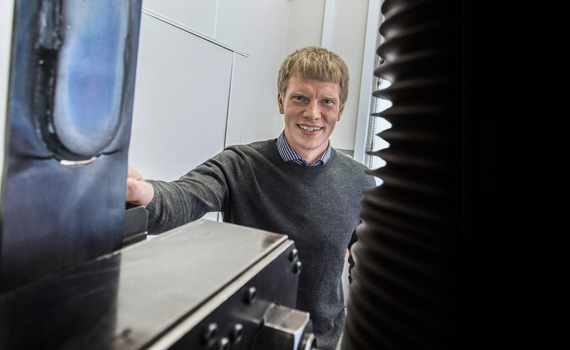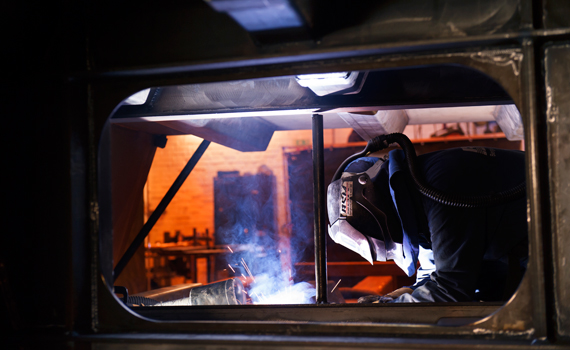Fighting fatigue

As Anders Ohlsson, Manager of Joining & Thermal Cutting Technologies at SSAB’s Knowledge Service Center explains, it is very costly to carry out reliable quality assurance on welded structures. As a result, one of the main limitations in the steel industry today is its inability to effectively ensure
weld quality in its products.
“Welding typically takes place during manufacturing, but can only be quality controlled through visual inspections once the process is complete. A component may therefore go through the entire manufacturing process before a weld defect is discovered, after which it would need to be either repaired or scrapped,” he says.
“Meanwhile, due to time and cost constraints, it’s normally only possible to inspect a fraction of the total output. So, even though a lot of time is invested in carrying out weld inspections, you still run the risk of delivering parts with welding defects to the market,” adds Ohlsson.
Thanks to a new innovation by Thomas Stenberg, a PhD student at KTH Royal Institute Of Technology in Stockholm, these concerns will soon be history. Stenberg and his colleagues have developed a new robust quality assurance (QA) method, which uses a laser profile scanner to assess the welded surface and measure the quality of the weld. The most revolutionary aspect of this method is that the assessment takes place in real time – online – during the actual welding process.
“This system will provide instant feedback to the welding operator on whether the welded joint fulfills all its requirements,” explains Stenberg. “If not, the welding robot will be able to adjust the process parameters to ensure that the weld quality complies with the desired result, without needing to disrupt the process or repeat the work.”
Ohlsson adds that the new QA method has the potential to revolutionize the ways in which many of SSAB’s customers utilize HSS, opening up opportunities for more applications to benefit from its superior qualities, which include lower component weight and reduced fuel consumption.
“Minimizing the occurrence of failures caused by fatigue will enable us to use HSS in many applications in which they cannot be used today – such as in machines and components that are known to be subject to high stress concentrations. Examples of these applications may include chassis for manufacturing and forestry equipment, trailer chassis and components used in energy production,” says Ohlsson.
According to Stenberg, who won the 2015 Swedish Steel Prize “University Challenge” award from SSAB for his groundbreaking work on the new QA method, the method will deliver significant benefits to the customers who implement it.
“Firstly, we expect productivity to increase by about 50 percent due to increased robot travel speed, coupled with a reduction of up to 30 percent in the consumption of weld filler material,” he says. “It will also allow manufacturers to cut lead times, thanks to the reduced number of inspections, while the need to scrap or rework products will be minimized.”
 New QA method
New QA method
The method is a groundbreaking quality assurance technology that uses a laser profile sensor to assess the weld bead surface and quantify the parameters needed to ensure the quality of structural components that are subject to fatigue loading. The welding operator uses the laser profile scanner to measure the welded surface and assess the quality of the weld. If it is found to be inadequate, the welding robot can adjust the process parameters to ensure that the weld quality complies with the desired result. Thomas Stenberg and his colleagues are currently working on developing a commercial version of the method, which is expected to be available on the market within one to three years.
Areas of use
The new quality assurance technology is primarily designed for a range of welding methods, including MMA, MIG/MAG, TIG, SAW, Laser and Plasma welding. From SSAB’s point of view, this makes it particularly applicable to the Strenx High-Strength Steel product program.
Text: Isabell Kliger
This article has been published on SSAB World magazine’s issue 1/2016.